PDK Doesn't Ruin the 911 GT3
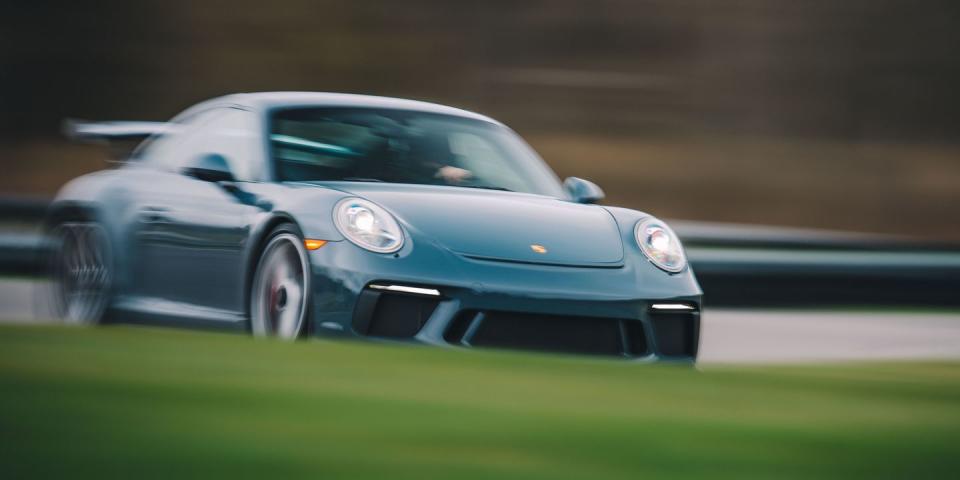
The big deal with the recently refreshed Porsche 911 GT3 isn't the 4.0 liter, 500 horsepower flat-six. It's not the slightly revised styling. It's not the updated infotainment system, though, to be fair, infotainment is never a big deal with a 911.
It's the availability of a six-speed manual gearbox. When it was absent from the 991.1-generation GT3, Porsche rationalized because the GT3 is a track car, and PDK is faster on track. The lack of a manual didn't stop us from declaring that GT3 our 2015 Performance Car of the Year. Yet something nagged at us, at Porsche fans, and clearly at Porsche itself.
That's why the company introduced the limited edition 911 R, a manual-only, wingless 991.1 with the 500 horsepower 4.0 liter flat-six from the GT3 RS. Immediately after it was introduced, prices skyrocketed to nearly seven figures, and people made some awful, possibly ruinous financial decisions to get one. It proved that there was a market for a 911 that valued a feeling over numbers, one that was more fun on the road than fast on the track.
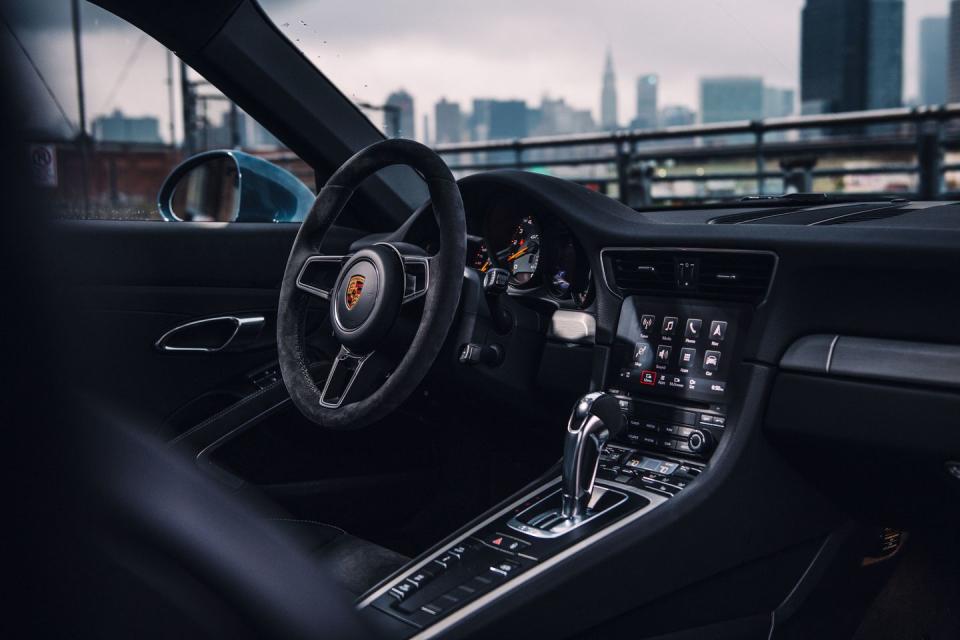
When the manual returned to the GT3 for the refreshed 991.2 model, people talked about it like Led Zeppelin had reunited. Everyone seemed to forget that the PDK was still available for those who prefer paddle shifting or spend their lives on track chasing lap times, like how we all tend to forget about Robert Plant's solo career.
You might be one of the people stoked about the manual. You should be; we loved it when we drove it. The PDK might be a symbiotic match to the new, manic, high-revving 4.0 liter flat-six, but it's the gearbox that's more aloof on the road, distant. It makes the GT3 feel more sterile and clinical, and it feels more like a simulation while the manual is analog and visceral. We wanted to see if PDK would turn the GT3 into a video game on track. We found our answer after a day at Lime Rock Park.
If you've never been to Lime Rock, a glance at a track map will make it seem like nothing special. One left turn and six rights? Just 1.5 miles in length? How hard can it be?
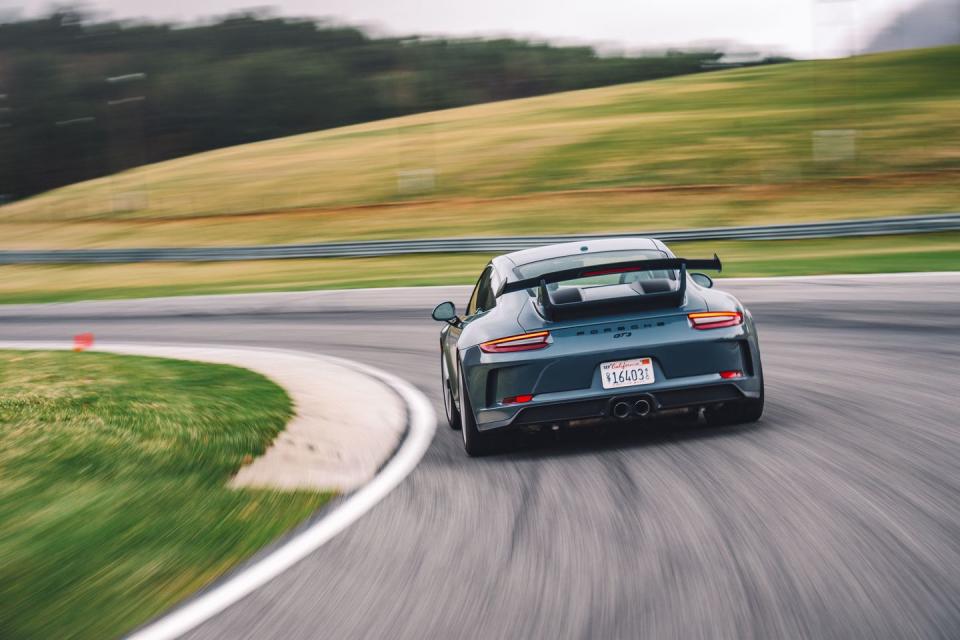
Hard. This is a track with elevation change, off-camber corners, walls in place of run-off. It can take dozens of visits to begin to understand its nuance. When we visited, the cool, occasionally rainy conditions added an extra layer of complexity to what is already a daunting track.
At speed in the rain, the GT3 is a handful. It feels bigger than you'd expect, and the Michelin Pilot Sport Cup 2 tires, which are far more suited to dry conditions, need to be babied. The GT3 asks to be driven tentatively and attentively; it always feels on edge.
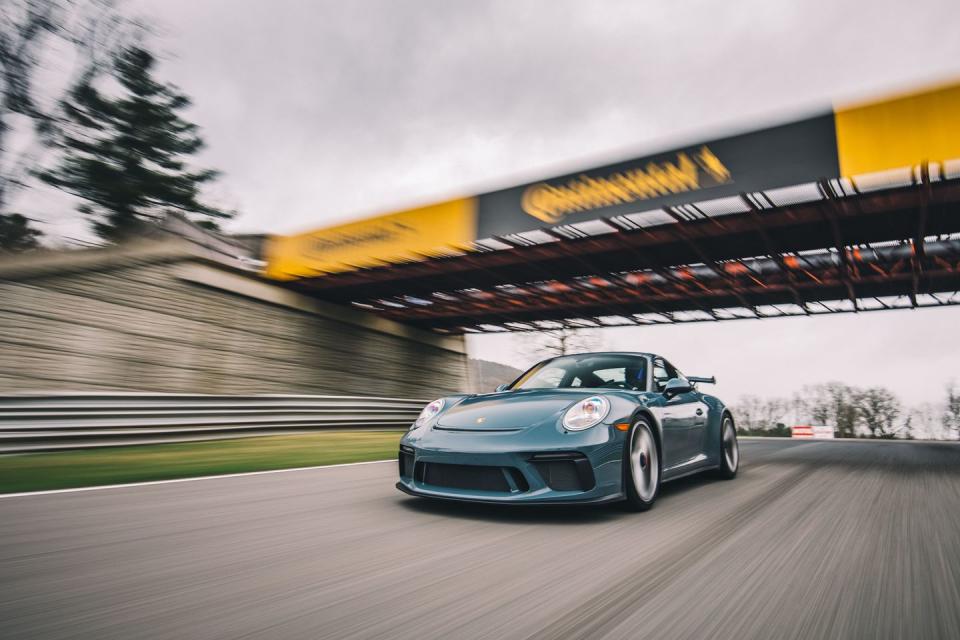
The good part is that the PDK gearbox lets you keep both hands on the wheel, and there's no chance of a missed shift messing up the balance. It lets you concentrate on getting the best out of the car in tricky conditions.
Where it really shines is when the track is dry, the tires are up to temp, and you just want to set a fast lap.
Even though PDK might make the GT3 a less enjoyable road car, it's the opposite on track. When you don't have to shift, you don't have to think about the clutch, rev matching, heel-toeing, or really messing up in any way.
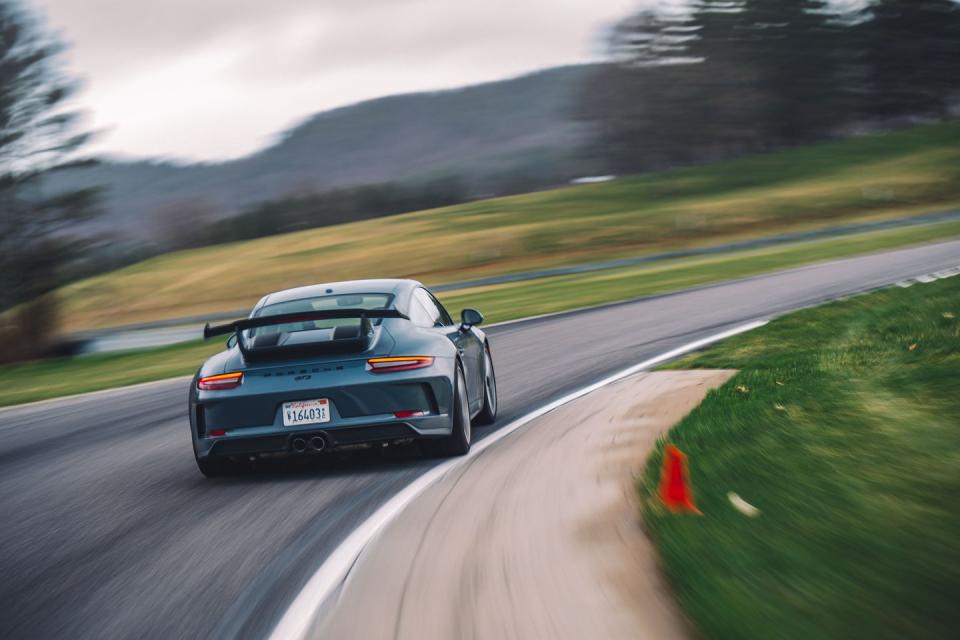
So you engage less with the gearbox, but that lets you engage more with the rest of the car. Parts that are unsung when using the manual come to the fore.
The steering, for instance. When the 991 debuted, Porsche gave it an electric setup that was immediately panned for losing much of the 911s magical front end feel and character. Over time and through multiple revisions, the 991's steering went from despised to lauded. In just a few short years, Porsche had mastered electric steering.
And it truly is fantastic. It builds weight accurately through the corner and the front end just feels hooked up. There's nothing lazy about it-think about turning and it'll be so. The combination of the quick rack, sticky tires, the aggressive front suspension tuning, and the rear-wheel steering will have you bouncing over curbs and doing your best gentleman driver impression in no time.
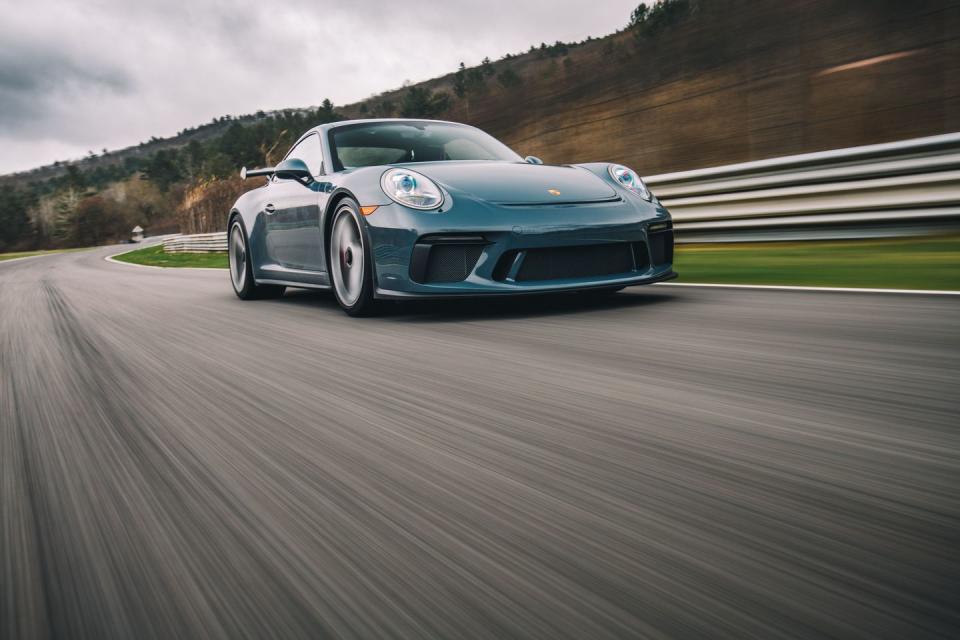
Rear-wheel steering is one of the more unexpected keys to the GT3. The 991-generation 911 is a big car, and in some situations–like at slow speed in the rain–the GT3 feels every inch of its size. Rear-wheel steering can virtually extend or shrink the wheelbase, providing greater stability at high speeds and more agility at low speeds. This allows the GT3 to close around you and feel like a car that's half its size. The best thing would be for the car to just be smaller from the factory, but that doesn't seem to be happening, and we, unfortunately, don't live in a world where Willy Wonka could shrink it for you.
Then there are the brakes. Our GT3 wasn't equipped with Porsche's carbon ceramic brakes, which are a $9,210 option. You don't need them, even for track duty. The steel brakes have none of the compromises associated with carbon brakes, like squeaking and grabbiness on the road. They also don't have downsides on the track. They bite immediately and don't fade over the course of dozens of laps.
Sure, they're heavier than the carbon brakes, though if you can detect that amount of unsprung weight in daily driving, you must have already won Le Mans.
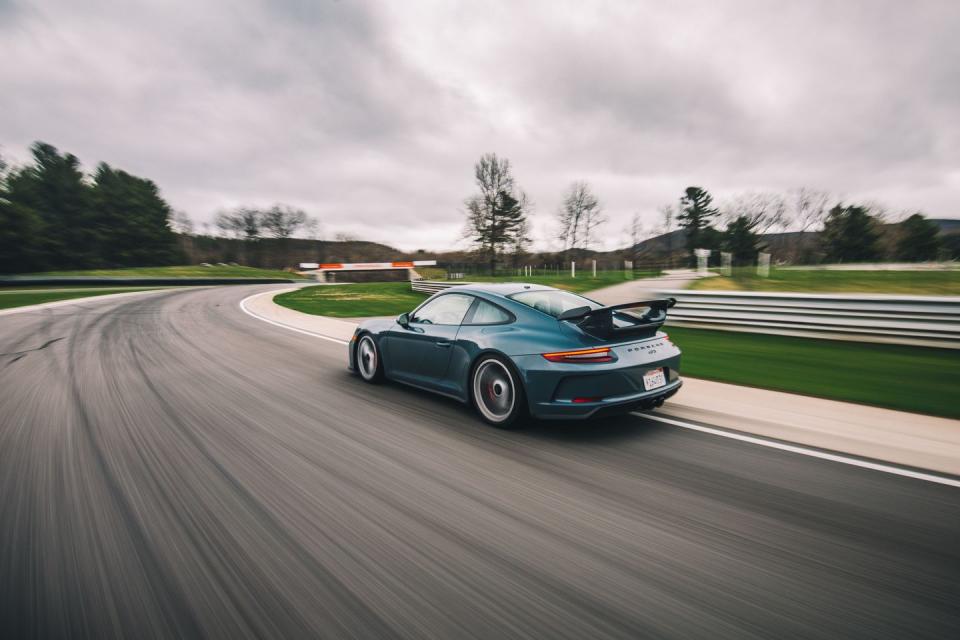
And then there's PDK.
PDK is one of the all-time great gearboxes and easily the best paddle-shift transmission you can buy today. The GT3's version of PDK is one of the quickest-shifting versions of the transmission, with gear changes that seem to happen before you even flick the paddle. And no matter how good you are at shifting a manual gearbox, PDK is smarter than you and allows you to do things you wouldn't with a manual car.
For instance, a mid-corner shift typically risks upsetting the balance of a car and can cause a handling issue. Since the transfer of power is so quick and smooth with PDK, you can shift in a corner without upsetting the chassis. That lets you go quicker, and that makes the braking and steering stand out.
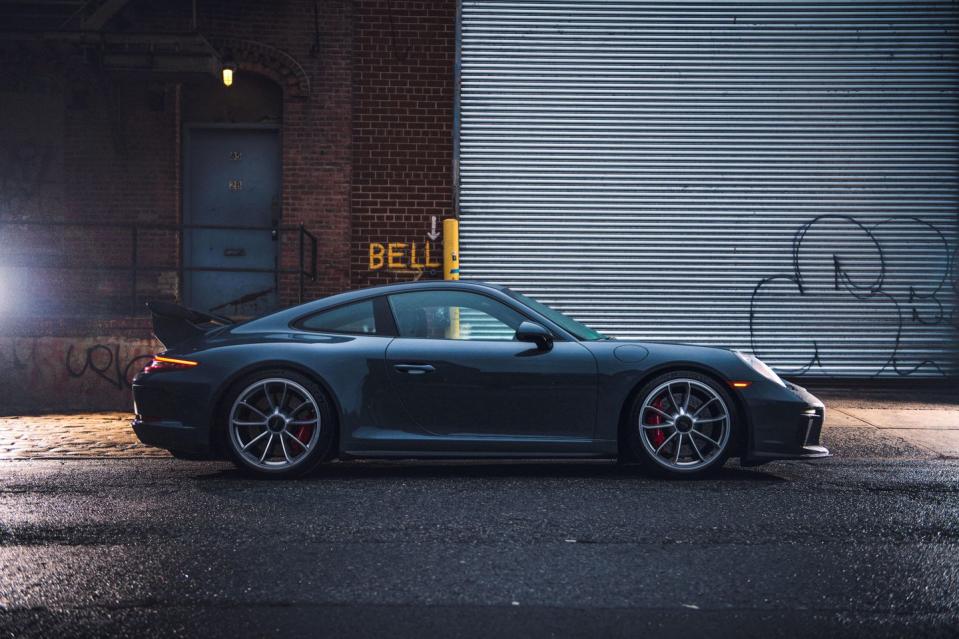
The argument for bringing the manual back to the GT3 was that it would value the experience over the numbers. On the road, it's undeniably more enjoyable to drive the manual car. The PDK is what you want if you're going to spend a lot of time on track.
No, track days aren't technically about lap times. But don't you want to be faster than the other cars? Would you be thrilled if your 911 was passed by a DSG Golf R on track? If you're saying 'yes' to that question, I believe you're lying.
The road is the place to be involved with each nuance of the car; the track is where you can exploit the limits in a controlled environment. With the manual, even if you might claim to be "more involved," you'll be going slower and won't be getting the most out of the brakes, engine, and handling. With the PDK, you can get the most out of every part of the car.
Isn't that what you want to do?
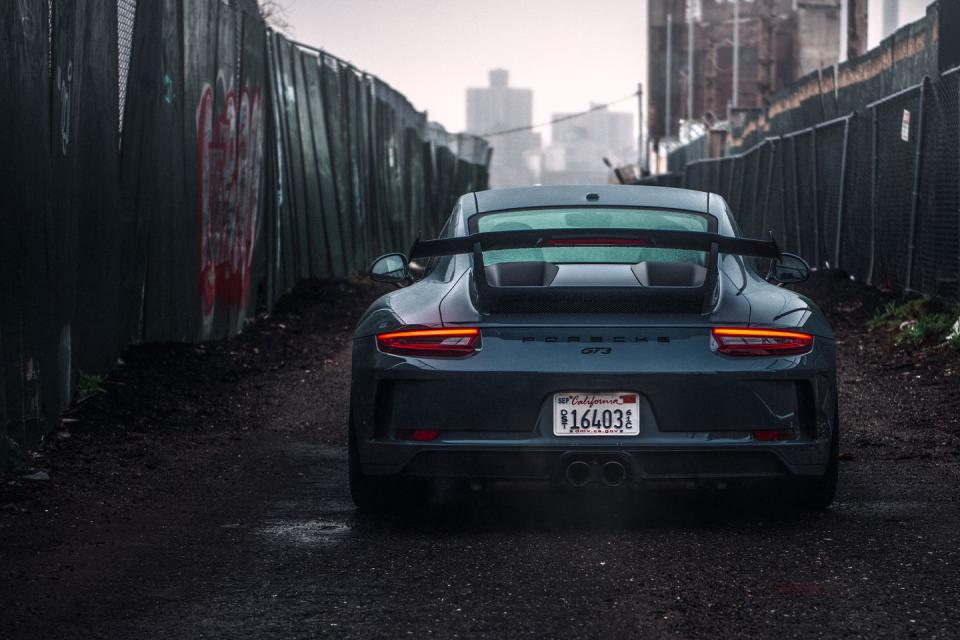
You Might Also Like

 Yahoo Autos
Yahoo Autos 